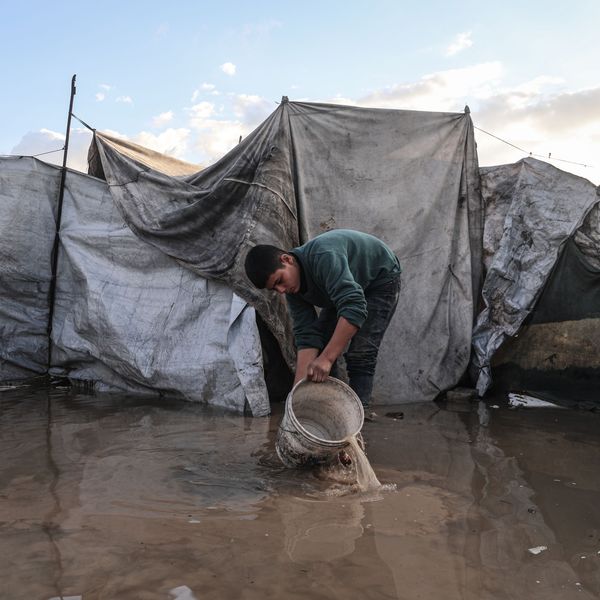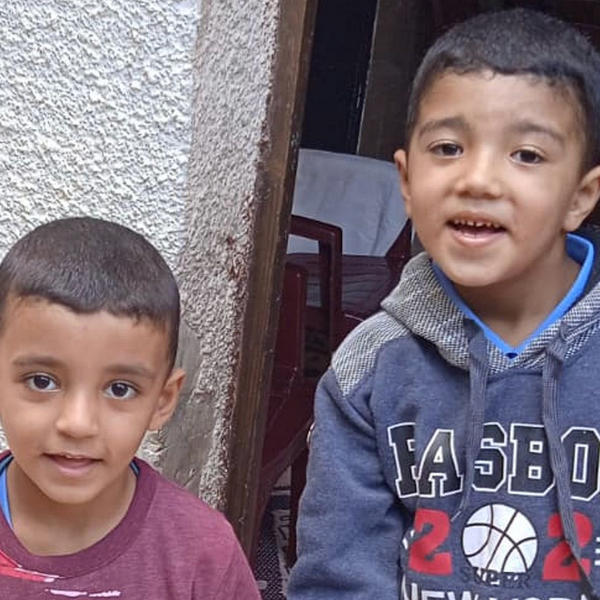Iran Death Toll Mounts, Thousands Injured as Aid Efforts Struggle
Hospitals were flooded with earthquake victims on Sunday as rescuers raced to reach remote villages after two earthquakes killed at least 250 across northern Iran on Saturday. Clean up efforts proved difficult while thousands of people gathered in makeshift camps or slept in the streets in cold weather for fear of more aftershocks, 40 of which had already hit.
Casualty figures are expected to rise. A lack of tents and medical supplies are hindering aid efforts and many injured are in critical condition. Well over 2,000 have been injured so far, while hundreds are still trapped under rubble.
"I saw some people whose entire home was destroyed, and all their livestock killed," Tahir Sadati, a local photographer, said by telephone. "People need help, they need warm clothes, more tents, blankets and bread."
The worst damage and most casualties occurred in hard to reach rural villages surrounding the towns of Ahar, Varzaghan and Harees, near the major city of Tabriz, Iranian media reported.
The U.S. Geological Survey measured Saturday's first quake at 6.4 magnitude 37 miles northeast of the city of Tabriz. A second quake measuring 6.3 struck 30 miles northeast of Tabriz 11 minutes later.
An Urgent Message From Our Co-Founder
Dear Common Dreams reader, The U.S. is on a fast track to authoritarianism like nothing I've ever seen. Meanwhile, corporate news outlets are utterly capitulating to Trump, twisting their coverage to avoid drawing his ire while lining up to stuff cash in his pockets. That's why I believe that Common Dreams is doing the best and most consequential reporting that we've ever done. Our small but mighty team is a progressive reporting powerhouse, covering the news every day that the corporate media never will. Our mission has always been simple: To inform. To inspire. And to ignite change for the common good. Now here's the key piece that I want all our readers to understand: None of this would be possible without your financial support. That's not just some fundraising cliche. It's the absolute and literal truth. We don't accept corporate advertising and never will. We don't have a paywall because we don't think people should be blocked from critical news based on their ability to pay. Everything we do is funded by the donations of readers like you. Will you donate now to help power the nonprofit, independent reporting of Common Dreams? Thank you for being a vital member of our community. Together, we can keep independent journalism alive when it’s needed most. - Craig Brown, Co-founder |
Hospitals were flooded with earthquake victims on Sunday as rescuers raced to reach remote villages after two earthquakes killed at least 250 across northern Iran on Saturday. Clean up efforts proved difficult while thousands of people gathered in makeshift camps or slept in the streets in cold weather for fear of more aftershocks, 40 of which had already hit.
Casualty figures are expected to rise. A lack of tents and medical supplies are hindering aid efforts and many injured are in critical condition. Well over 2,000 have been injured so far, while hundreds are still trapped under rubble.
"I saw some people whose entire home was destroyed, and all their livestock killed," Tahir Sadati, a local photographer, said by telephone. "People need help, they need warm clothes, more tents, blankets and bread."
The worst damage and most casualties occurred in hard to reach rural villages surrounding the towns of Ahar, Varzaghan and Harees, near the major city of Tabriz, Iranian media reported.
The U.S. Geological Survey measured Saturday's first quake at 6.4 magnitude 37 miles northeast of the city of Tabriz. A second quake measuring 6.3 struck 30 miles northeast of Tabriz 11 minutes later.
Hospitals were flooded with earthquake victims on Sunday as rescuers raced to reach remote villages after two earthquakes killed at least 250 across northern Iran on Saturday. Clean up efforts proved difficult while thousands of people gathered in makeshift camps or slept in the streets in cold weather for fear of more aftershocks, 40 of which had already hit.
Casualty figures are expected to rise. A lack of tents and medical supplies are hindering aid efforts and many injured are in critical condition. Well over 2,000 have been injured so far, while hundreds are still trapped under rubble.
"I saw some people whose entire home was destroyed, and all their livestock killed," Tahir Sadati, a local photographer, said by telephone. "People need help, they need warm clothes, more tents, blankets and bread."
The worst damage and most casualties occurred in hard to reach rural villages surrounding the towns of Ahar, Varzaghan and Harees, near the major city of Tabriz, Iranian media reported.
The U.S. Geological Survey measured Saturday's first quake at 6.4 magnitude 37 miles northeast of the city of Tabriz. A second quake measuring 6.3 struck 30 miles northeast of Tabriz 11 minutes later.

